I've had Kaos for almost 2 months now, and have developed my initial internet setup. This is similar to posts I've done for previous years and boats, and is just a point in time - I'm always constantly tweaking my setup and making modifications to get slightly better performance and range.
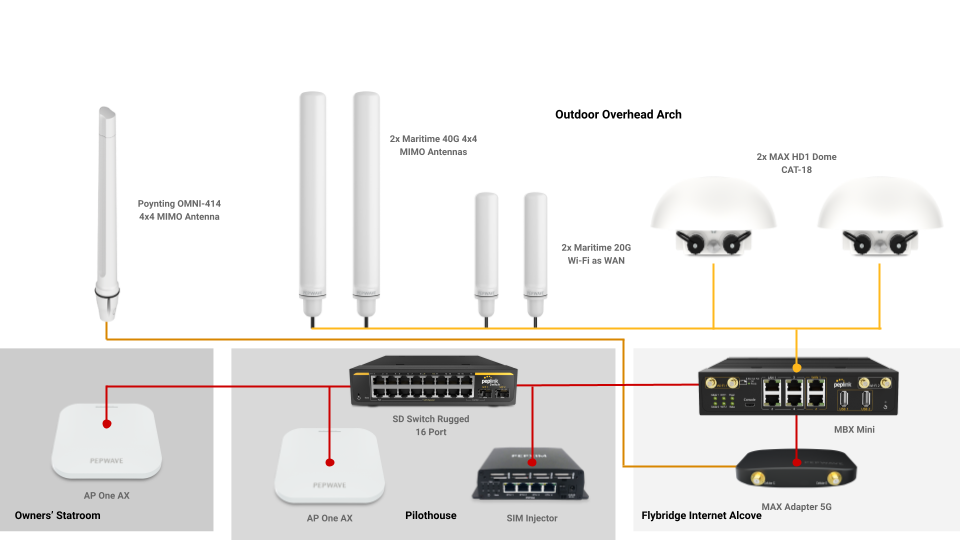
Webinar
I participated in a webinar with Peplink and Doug Miller from Onboard Wireless where we discussed maritime connectivity, and I touched on this setup a little bit as well. You can find a recording of this below.
Core Router

I've gone with the Peplink MBX Mini 5G as my main core router. It has 2x 5G modems, 4x WiFi antennas / 2x WiFi radio blocks, 2x USB ports, 2x WAN ports, 4x PoE LAN ports, multiple power options and 4 SIM slots. It has a very powerful CPU which allows for multiple WAN / internet sources to operate at their full potential, plus using features like SpeedFusion Cloud. Previous to this system, I was using a Peplink MAX HD4 MBX which is the same general platform line, but with 4x modems. This was overkill for my setup, and only had CAT-18 modems. The MBX Mini is a better size for my situation, both physically, in terms of power usage, and for the number of ports and connections it has, plus it has newer 5G modems.
I'm running the router off of 12 volt DC power as I am not using the built in PoE ports, and wanted to avoid having to provide 54 volts via the included AC power brick, or using a buck converter.
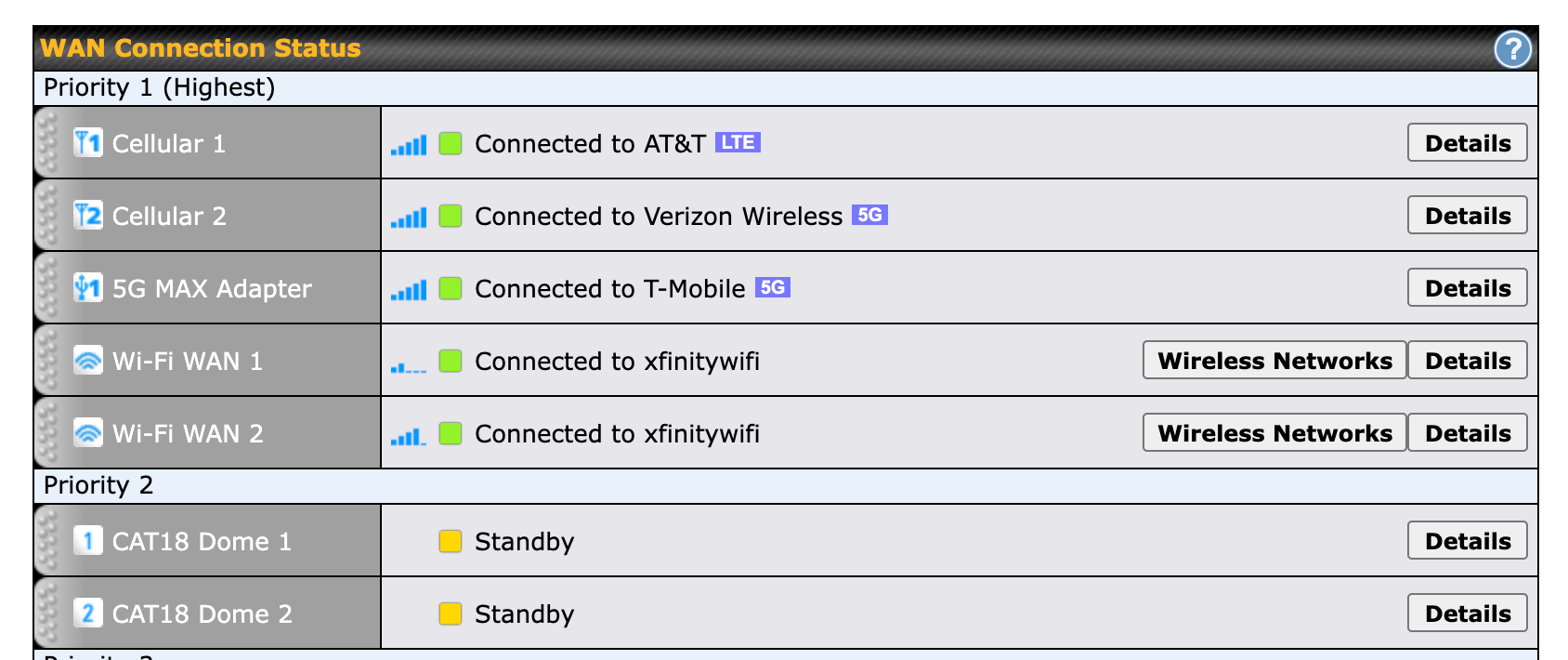
The main motivation for using this router is the number of WAN or internet sources I can have.
You can see above I am leveraging the two built-in 5G radios to grab connections from cellular providers as well as a USB connected 5G MAX Adapter - more on that below. This allows me to have three cellular connections that use outdoor marine-grade antennas for maximum performance. I also have two CAT-18 domes connected to the WAN ports, plus I am using both WiFi radios to remotely grab WiFi signals.
This gives me 3 native cellular connections, 2 WAN cellular connections, and 2 WiFi as WAN connections for a total of 7 different sources of internet. I should never be disconnected!
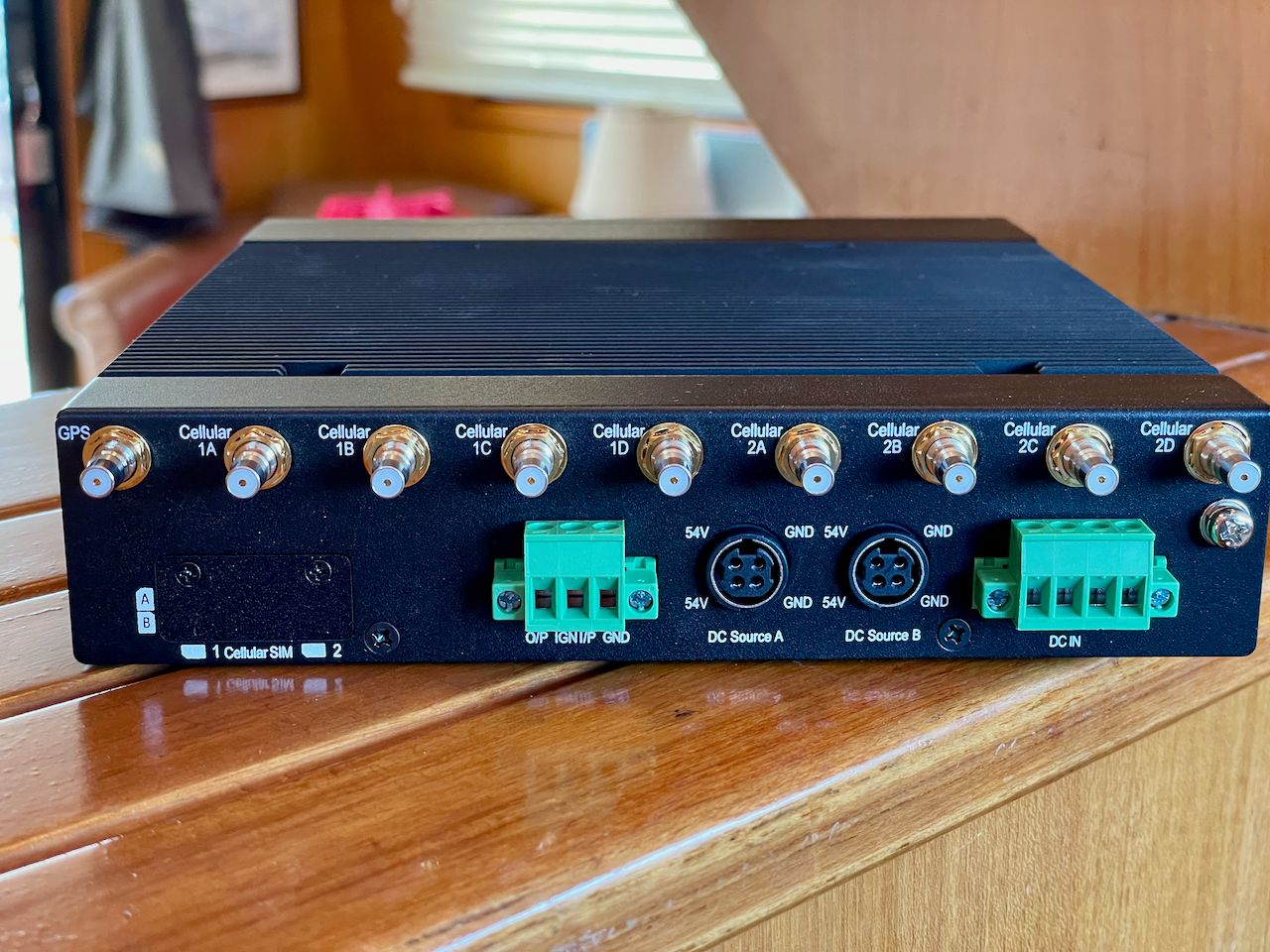
The one drawback with the router is the antenna connectors which are the newer QMA-style that I've mentioned in previous articles. This means you will need a QMA to RP-SMA adapter (or in this case 8x of them) for most antennas. While I like the QMA adapter for how easy it is to connect, I'd like to see more antenna manufacturers supply native QMA ends so that we don't have to buy adapters, and add both cost and signal loss.
This is not an inexpensive router, it must be pointed out, but you get what you pay for. Everything has gotten more expensive with the supply chain challenges specifically around technology and the chips and components that make them, and that affects Peplink as well. If you compare this to another favorite of mine, the MAX BR1 Pro 5G, which is about $1500, you might think this would be 2x the price because of the 2x 5G modems, but you need to factor in all of the other WAN and LAN ports, the dual WiFi radios, PoE power, USB ports that can be additional modems, and the much faster and more capable CPU. Without quoting prices, which Peplink frowns on for their higher end products, you can expect this to be 4x the BR1 Pro 5G price.
Before you complain about how expensive it is, think about how much money you spend on chart plotters, bottom paint, your power system, or engine service. Is the internet on the top 5 list of important things on your boat? Do you need 24x7 always on connectivity? Then this is likely a good choice for you. Yes, you could buy a $100 router off of Amazon, combine it with a bunch of other $100-200 devices, and end up with some of the features that this product has, but not all. And it would be very difficult to manage, isn't built for being on a boat, etc. You get what you pay for, and 5G + redundancy + top end solutions aren't inexpensive.
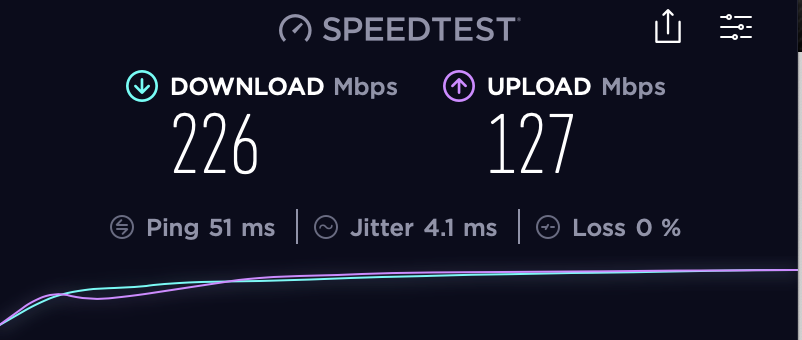
My home marina, Elliott Bay Marina, is notorious for having really poor connectivity for just about everything. It's a great place to test all three US providers as there are challenging conditions, long distances to towers, and performance issues as a result.
I've been very impressed with the MBX Mini's ability to pull in 5G signals with better levels than even the BR1 Pro 5G, and the overall performance. Above you can see a speed test using T-Mobile 5G at Elliott Bay Marina, and it's excellent performance. I've seen faster download speeds out of the Netgear Nighthawk 5G, but only in very specific conditions, not repeatable over and over, and never this sort of upload performance, which speaks to using high quality outdoor, large antennas. Upload performance is critical for remote working given the amount of virtual meetings via Zoom and Teams we do nowadays, and all of the other data you're generating while working.
I'm very pleased with the overall performance of the MBX Mini 5G - top end cellular speeds, able to pull in both cellular and WiFi signals well, snappy CPU to keep everything working very fast including SpeedFusion Cloud, and lots of ports and connectivity for all of the things I have running through it.
MAX Adapter 5G
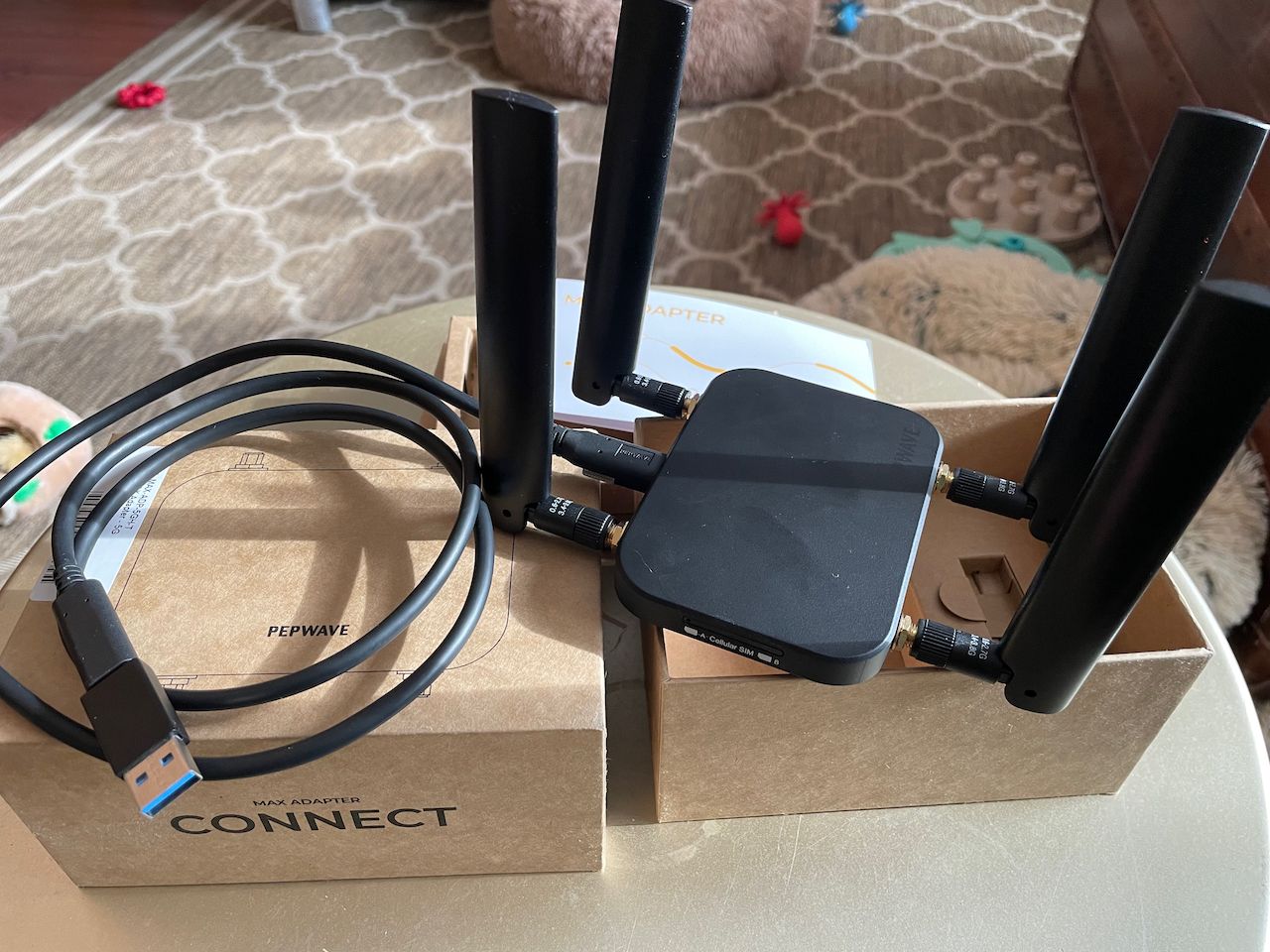
The MAX Adapter 5G is an odd product to include in my setup at first glance, but the MBX Mini allows you to connect USB devices for additional connectivity. This means you can expand to 4x 5G radios (there are 2 USB ports on the MBX Mini) relatively inexpensively by adding the MAX Adapter 5G and connecting it to a good outdoor antenna.
Unfortunately you cannot use the SIM injector or remote SIM features with this product, which means putting a SIM directly into a little fiddly tray on the side of the thing. Since I swap SIMs around a lot for testing, this is somewhat limiting.
The bigger issue is the lack of information or control when using the adapter with a router. There's very little detail about the type of connection, bands, and signal levels which is important to know not just when testing, but in daily use. You can't change any settings, lock to specific bands, or anything else. I've asked Peplink if they intend on changing this, and have not gotten definitive information, but I hope it is something they consider. I've also not had great performance out of this product in general, so while I am using it, I wouldn't recommend it right now.
Domes

I have been a fan of the Peplink MAX HD1 CAT-18 dome for quite a while, and while they aren't 5G, they still perform very well because there is little to no loss between the modem and the antenna given it's all inside the dome, mounted outside. I have two of them mounted on the arch and connected to the MBX Mini WAN ports for additional sources of cellular connectivity.
SIM Injector
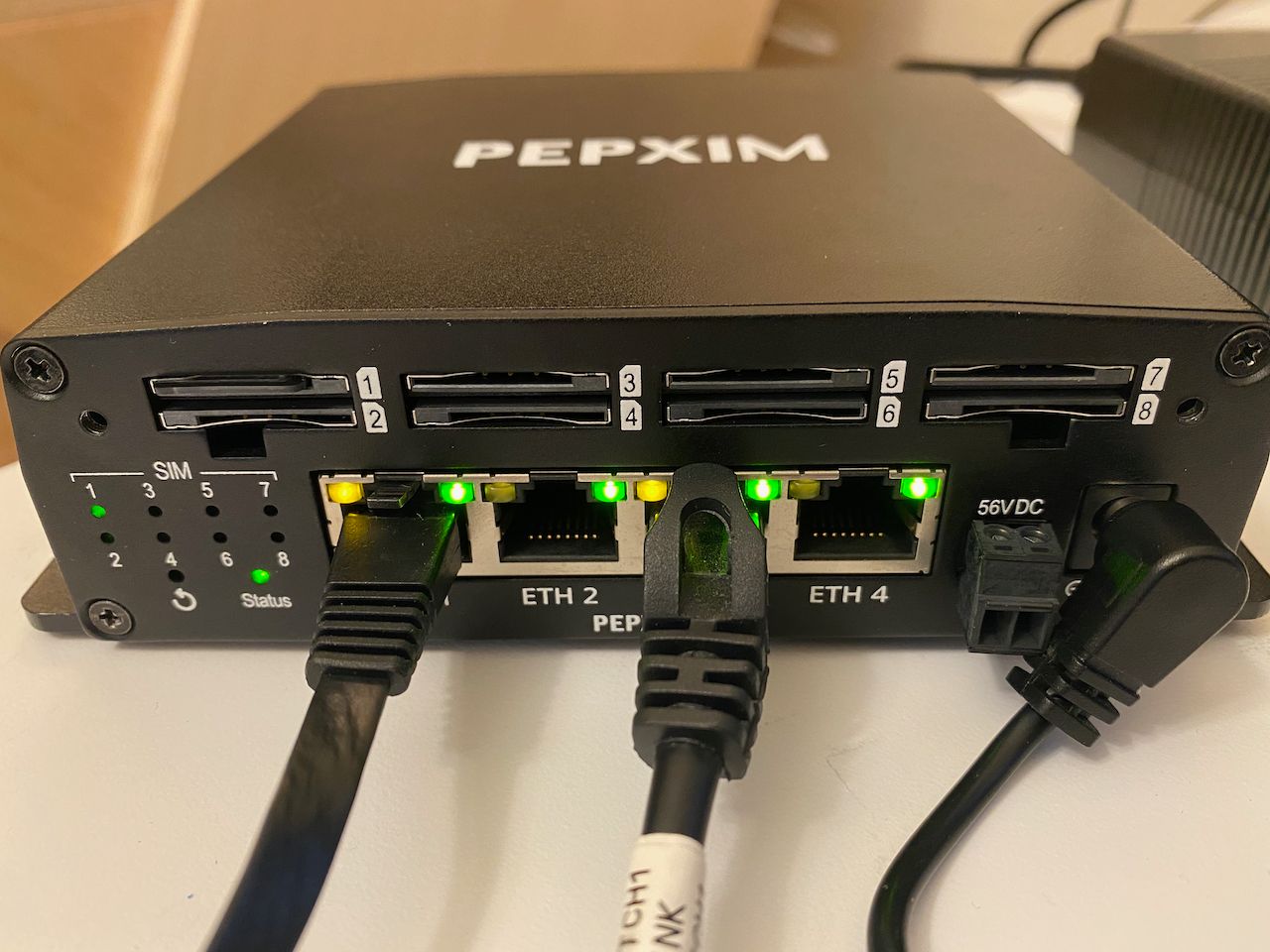
In order to provide the maximum flexibility with using SIM cards and plans on all of these devices, I am using a SIM injector on the LAN network, connected to the switch in my pilot house so I can swap things around if needed without going to the router. I use a special feature to pass the SIM injector traffic through the router and out to the HD1 domes so they can take advantage of it as well.
This means I can pick which SIM is being used by what device very easily, all except the MAX Adapter 5G. This device is highly recommended if you have an HD1 or HD2 dome, and I had one as a result of that purchase a year or two ago.
Antennas
At this point in time, I have the following antennas:
- 2x Peplink Maritime 40G 4x4 MIMO
- 1x Poynting OMNI-414 4x4 MIMO
- 2x Peplink Maritime 20G 2x2 MIMO
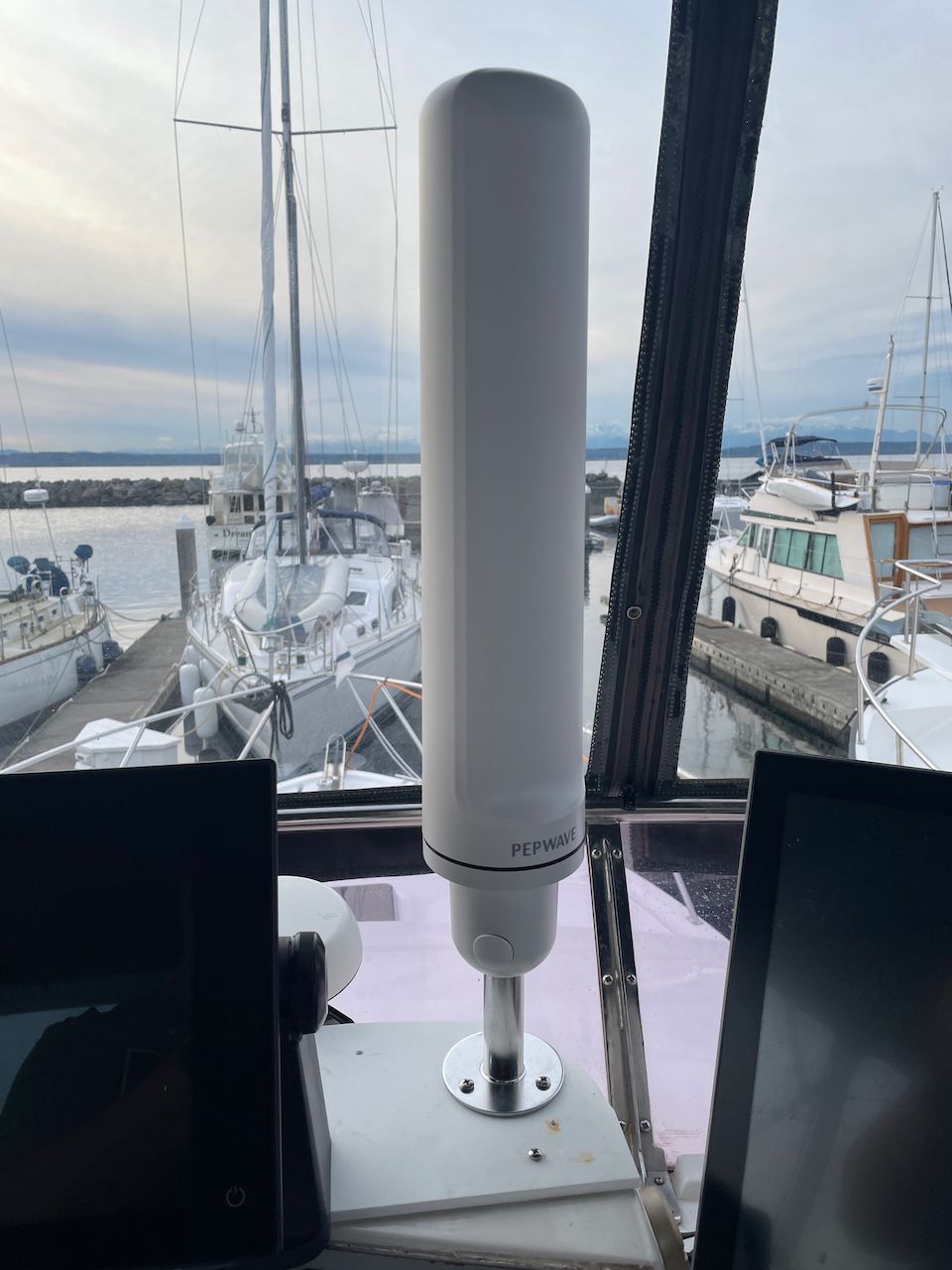
The Peplink Maritime 20G and 40G are some of my most recent favorite antennas. I'm using both of those in this setup and have been very pleased with the performance. I have an article coming out on both the 20G and 40G details soon.
I also have the new Poynting OMNI-414 which is comparable to the Peplink Maritime 40G in terms of 4x4 LTE and frequency coverage. I've not had it very long, and am still doing some testing, so I can't say whether the OMNI-414 or the Maritime 40G is better/worse.
All of these antennas are up on the arch and as close as possible to the router. I did have to extend the existing 6' cables to get things where I wanted on and around my arch, but nothing more than about 20 feet total length. I always try to keep it below that, and with high quality cabling.
WiFi as WAN
This is a feature that a lot of people overlook with Peplink, and I highly recommend you consider it for any deployment. It allows the router to connect to a remote WiFi network and use that as an internet source.
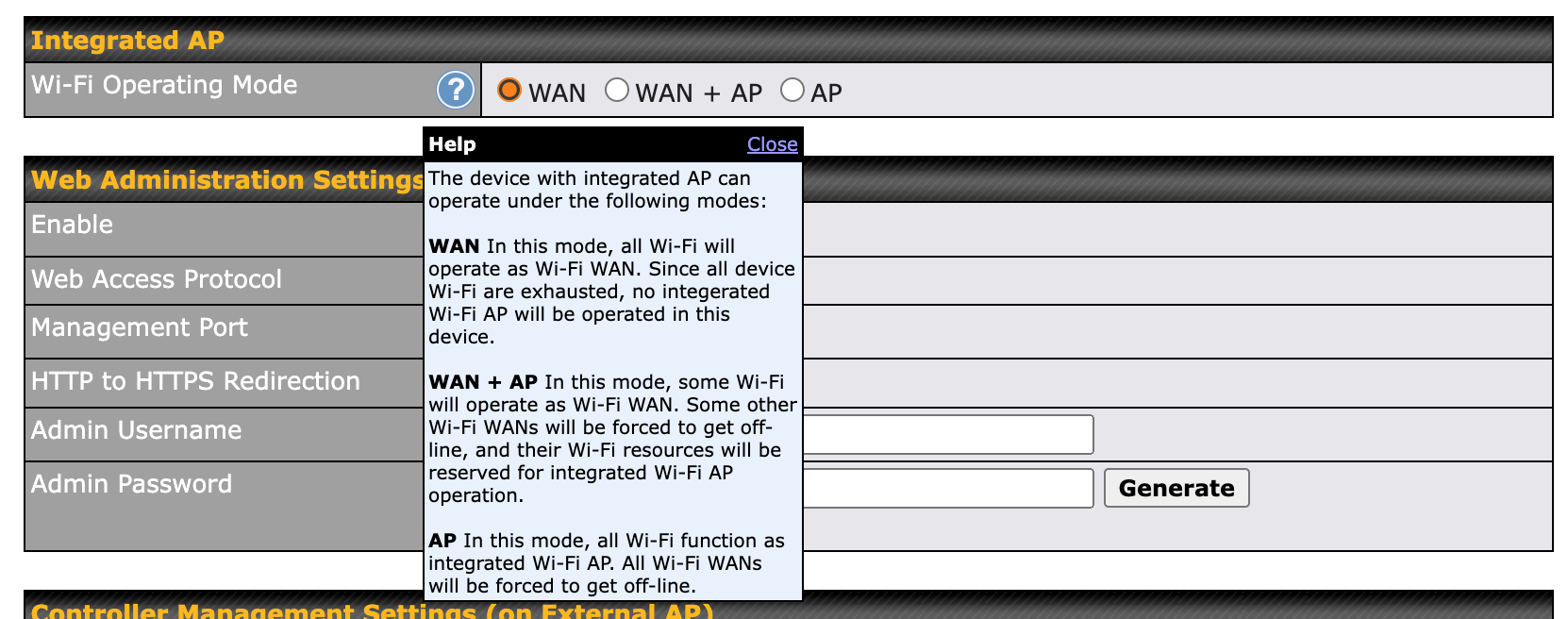
For almost any deployment, even one with a BR1 Pro 5G or MAX Transit, I prefer not to use the built in access point within the router. Instead, put the router close to the antennas, and add an access point (see below) that can provide local WiFi closer to where the people are in the boat. This also offloads that work from the router, which in the case of the older MAX Transit line, is already quite busy.

For the MBX Mini, I am using both WiFi 1 and WiFi 2 for WiFi as WAN, with them connected to Maritime 20G antennas. This means I can actually have redundant WiFi as WAN connections while at a marina or near a WiFi source, even if it is to the same source, and not have to burn cellular data capacity. I've used this feature for many years, and have been very happy with it.
The MBX Mini allows you to use both radios for this, but some of the other Peplink products are less clear. The MAX BR1 Pro 5G allows you to use both 2.4Ghz and 5Ghz radios separately for WiFi as WAN, while some of the MAX Transit product lines only allow one connection. I've not been able to figure out the exact reason behind some of the restrictions, but if you are at a marina or area with WiFi for any length of time, investing in WiFi as WAN is critical.
Local WiFi
As I mentioned above, having separate access points from the main router is a good design principle for a high end system. I'm using 2x Peplink AP One AX units being powered by the SD Switch Rugged (see below) and placed in two different spots around the boat.
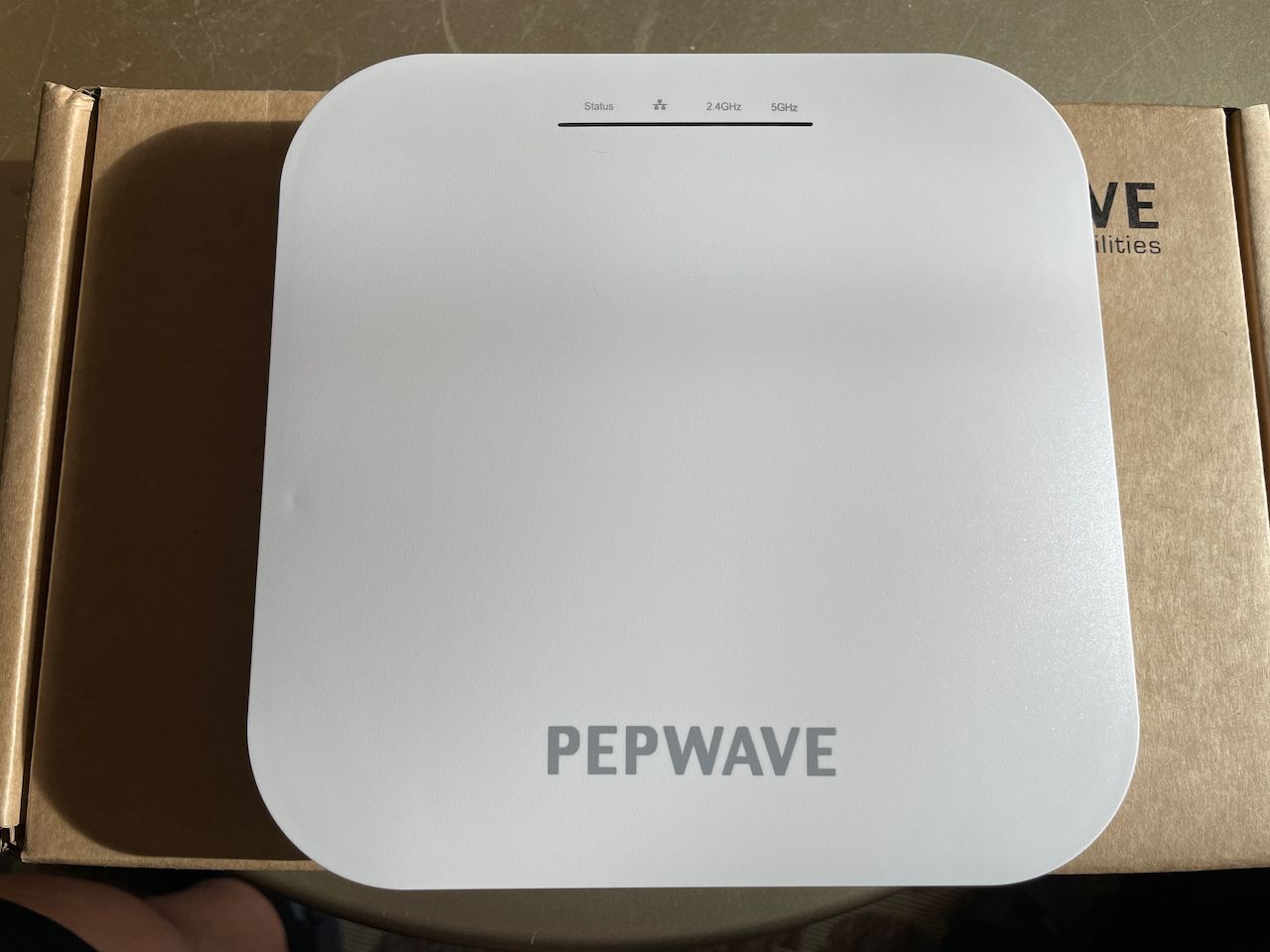
For years I've used the AP One Rugged access point, and still prefer it for a lot of installations, but it is quite old in terms of the WiFi radios and support. So far I have been happy with the AP One AX in terms of speed and supporting WiFi 6. I use the AP functionality in the MBX Mini to manage them which makes it nice to have everything in one place.
I have had some random issues with super-latency sensitive music equipment and the AP One AX versus the Rugged or even UniFi equipment, and continue to look into that issue. It could just be WiFi 6 nonsense, which has caused problems for some older equipment, or it could be Peplink specific. More testing is needed.
Switching
I'm using a Peplink SD Switch Rugged 16 which has a couple of nice features. It can provide 8 ports of PoE power to various devices, like my access points, and it also has pass-through ports that still work even if the switch is down or has no power, which can be useful in the event of a failure.
I had purchased this unit for another project that fell through, so I kept it and ended up using it aboard Kaos.

It has some limitations compared to the many other switches I've used through the years. It's feature set is pretty good, but is still missing the odd feature here and there, and is not that easy to use. As an example, you can't administer it via any of the normal ports initially - you have to connect to a special port, and then set it up to use one of the other ports for administration. Some of this is similar to complex enterprise switches, which is fine, but this doesn't really qualify as that. The biggest challenge is the price, which is several times more than comparable offerings, and from companies who have much higher track records. It also tends to use more power than other products. We'll see if this stays aboard longer term.
The primary reason I used it was for the PoE power which I need for my 2x access points, cameras, and a few other things. I had been using TRENDnet industrial switches for years, but their PoE offerings have a lot of limitations in terms of number of ports and configurations.
Cost & Wrap-up
One of the top questions I get is the overall cost for some of my systems, and while it is easy to add it all up, I'm not a 100% typical user. A lot of this equipment I purchased over multiple years while testing things, and I am pushing the boundaries of the whole platform / system in this particular case. All told, this entire set of equipment is around $15,000.
For a more typical deployment, you might have the following:
- Peplink MBX Mini 5G router
- 2x Peplink Maritime 40G antennas for the 5G radios in the MBX Mini
- 1x Peplink Maritime 20G antenna for WiFi as WAN
- 1x Peplink AP One AX access point
This would run about $8000 and provide a very robust setup with a lot of redundancy, connectivity and power.
In the near future I plan on adding some satellite capabilities and will likely displace one of the CAT-18 HD1 domes in place of that. I also hope to settle on a more permanent switching and access point solution depending on additional testing. And I am also interested in a showdown between the Poynting OMNI-414 and Peplink Maritime 40G antennas to see which one is better.
I'm pretty happy with the system so far, and while there are some drawbacks, it is an extremely powerful, capable setup that will allow me to remotely work pretty much anywhere I cruise.

